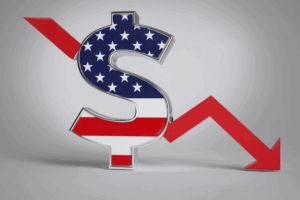Nufarm (ASX:NUF): Hit by lower commodity prices, adverse weather and Trump’s tariffs
![]() Nick Sundich, May 23, 2025
Nick Sundich, May 23, 2025
Have some sympathy for Nufarm (ASX:NUF). Companies capped at over $1bn rarely plunge 30% after reporting results unless the results (or the outlook) were bad enough to warrant it, and this is just what happened earlier this week.
Introduction to Nufarm (ASX:NUF)
Nufarm is an agricultural chemical supplier and manufacturer – its most important is omega-3 oil. It traces its origins to 1916 when New Zealand Farmers (NZFF) began as a developer of crop products. Nufarm Australia began in 1957 under the leadership of Max Fremder, and it merged with NZFF in 1988. It made a major foray overseas in the first half of the 1990s into North America.
Between 2000 and 2015, it was led by Doug Rathbone who was also a major shareholder. Overall, there was more good than bad, but 2010 was a bad year when glyphosate (a weedkiller ingredient) prices crashed, causing profits to fall, the company to breach debt covenants and investors to sue the company. Rathbone also sold shares to save his winery business interests.
For the last 10 years, Nufarm has been led by Greg Hunt. After a good first 4 years, shares have never reached their 2018 peak (of $9.28) again. You’d think the supply chain issues experienced during and after the pandemic would lead to an onshoring of supply chains. But the supply chain disruptions and volatile chemical prices impacted the company – first high prices hit demand, then falling prices led for difficulties by industry players to retain market share.
Of course, as an agriculture company, the weather has an impact too. The company has been trying to future-proof itself by working on seed technologies and biofuels. In particular it has developed Carinata, a crop grown from biofuels, and now is looking for approvals to grow it at a commercial scale.
Investors didn’t like 1H25
Perhaps the drop was big because it was a major turnaround from the company’s last set of results, the FY24 results, issued 6 months ago. The company hit the midpoint of its EBITDA guidance ($313m) and it reduced its net debt by 25%, even with cyclically low earnings. Even though EBITDA was 29% down on the prior yet and it made a $6m loss after tax, perhaps investors perceived it was a good result given the conditions and things would only get better.
Nufarm told investors to expect ‘double omega-3 revenue in FY25’ which would be $100m. It also promised net working capital to be ‘in line with 1H24’ and for $50m of annualised savings in overhead costs and a 25 day year on year reduction in inventory by the end of FY25.
Let’s turn to those 1H25 results that caused the company to plunge earlier this week. In some respects, there was good news. The company’s bottom line was back in black with a $29.8m profit and its crop protection EBIT was up 34%. There was a solid performance in hybrid seeds and it was a good crop year for carinata. Unfortunately, there were challenging times with mega-3 and the company no longer expects to double its revenues. The company also warned that Trump’s tariffs and adverse weather could hit the market.
It also announced a review into its seed technologies business. ‘We believe that there are potentially significant opportunities for enhancing value across these multiple seeds and traits platforms and that now is the right time to explore structures to support and accelerate the next stage of commercialisation,’ it said.
‘As a result, the company is undertaking a review encompassing whole of business and platform by platform approaches to maximising value. …At this stage no options are being ruled in or out’. It hired UBS for the review and said it would not pay a dividend for its entire business.
Conclusion
Agriculture is an essential business to be in, but also a risky one. Analysts covering the company are optimistic about the company, with a mean share price of $4.16 – which is essentially where it was prior to the crash. Its P/E for FY25 is just 16x and its EV/EBITDA is 7.6x. But we think it’ll take many months for the company to regain the confidence of investors, and it may even take another couple of sets of results demonstrating a turnaround for this to happen.
What are the Best ASX Stocks to invest in right now?
Check our buy/sell tips
Blog Categories
Get Our Top 5 ASX Stocks for FY25
Recent Posts
Here are the biggest tax implications of investing in stocks and how to slash your bill
The tax implications of investing in stocks are not often considered when you first start investing, although you may get…
US Credit Downgrade 2025: Safe Havens or Sell-Offs for Investors?
The US credit downgrade in 2025 has sent ripples through global financial markets, raising serious questions for investors worldwide. When…



